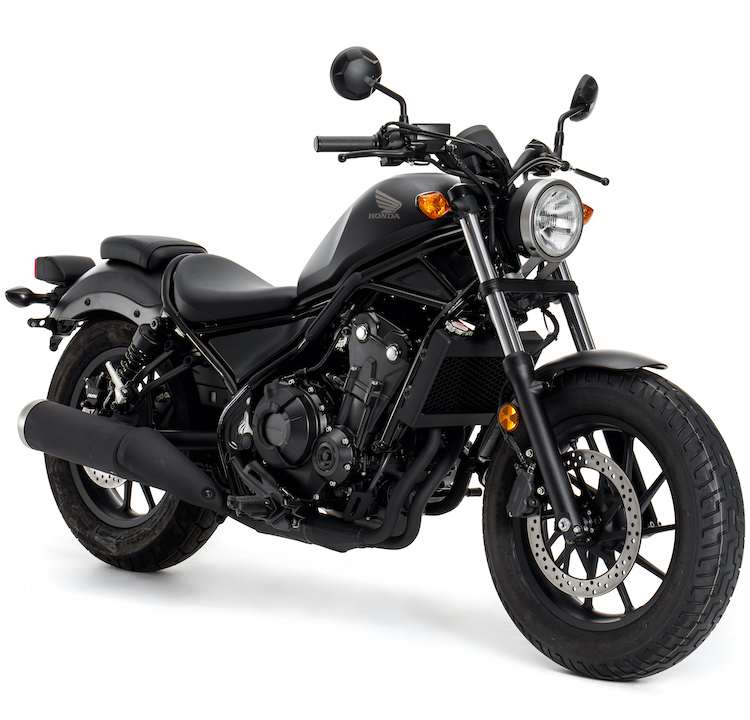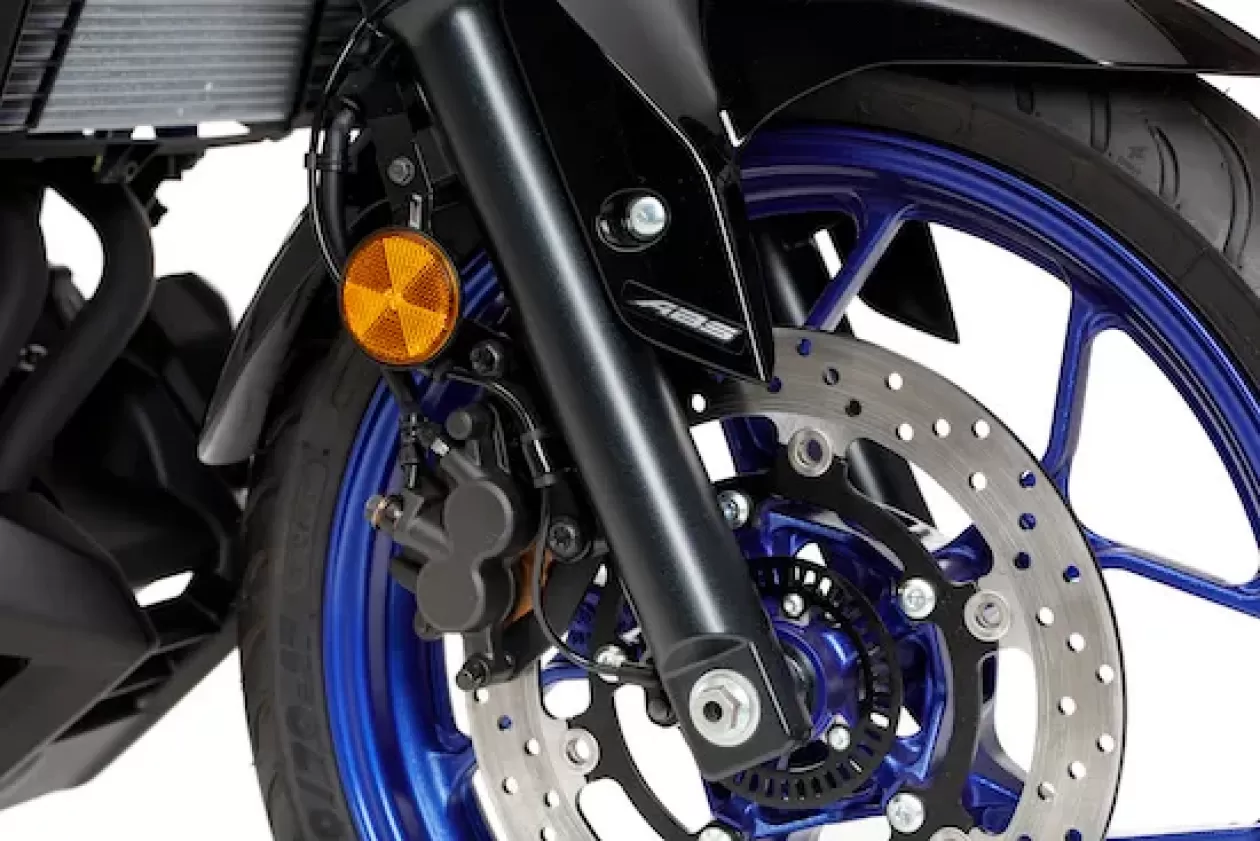The best bike technologies, a good maintenance routine and thorough pre-ride checks are essential for keeping safe on the road. Read below for the latest in bike tech and care.
BIKES
BIKE TECH & CARE

Technologies
In an emergency, it's difficult to judge how hard to brake. Not enough and you'll run out of road. Too much and you'll skid, often leading to a crash. ABS senses a locked wheel and adjusts the brakes to apply just enough pressure to stop the bike without skidding. In an emergency, ABS can shorten your stopping distance and help you keep control of the bike.

1. ABS - will I notice it when riding
Only under the hardest braking. ABS only operates when the wheel is about to lock, just before a skid starts. Under normal riding conditions, you won't notice ABS.
CHRIS VERMEULEN IN THE WET
Better in the wet
ABS works on wet roads to reduce skidding even more than it does in dry conditions.

ABS has improved
ABS doesn’t affect normal braking. Today, the weight of ABS is minimal and doesn’t cause drag. If you’re buying a new bike, test ride one with ABS.

Switching ABS off
Some dual-purpose motorcycles come with the ability to adjust the ABS for trail and off-road riding.
Please review the manufacturer’s instructions or consult a motorcycle professional to learn more about this functionality.

Does ABS make riders lazy
Even with ABS, knowing how to brake safely is an important riding skill, and one you need to practice. Good riders use their brakes to avoid an emergency, but even the best riders have days when ABS can make difference between a crash and a near-miss.

2. Traction control for rear wheel stability
When a bike accelerates, the traction control system monitors for a potential loss of traction at the rear wheel. If the system detects that the rear wheel speed is different to the front wheel speed, it will adjust the drive torque to keep the front wheel on the road and stop the bike from wheelying.

Overcoming too much throttle
Traction control is now widely available to stop the rear wheel from slipping on loose or slippery road surfaces. Its ability to overcome too much throttle helps all riders, especially learners and riders on unfamiliar bikes.
3. Cornering ABS
Cornering ABS does for your front wheel what traction control has done for your rear. It's an accessible intelligence upgrade, and a more specialised version of regular ABS. While both will allow controlled stops, Cornering ABS ensures that even if braking while taking a corner, you'll remain upright.

4. Motorcycle Stability Control (MSC)
MSC is another technology to reduce wheel slip, particularly when cornering. A bike with MSC will monitor data from wheel speed, lean angle, pitch angle, acceleration and braking pressure. The system will intervene if it senses the rider is losing control. Using an Inertial Measuring Unit, the MSC technology connects Cornering ABS, traction control and suspension management.

5. Search safe bikes and technologies
Check this safe bike search to see if the make and model of motorbike you’re considering or riding now comes with safety technologies.
Safe bike searchMaintenance
It’s critical to know when maintenance is needed on your motorbike. Carefully and regularly check over your parked bike at home. Experts offer detailed videos on YouTube to help spot issues. Before each ride, take a quick pre-ride check.
-
01 Tyres and wheels
More than 2mm tread all over is needed for tyres to be safe and legal. Check tyre pressure regularly to avoid blowouts, the correct tyre pressure is listed on the tyre placard or in the owners manual. Make sure you also check wheels for damaged spokes and unusual noises. Wash tyres regularly.
-
02 Brakes
When the bike is stationary, fully engage the brake and push the bike to see that the brake sops the bike from moving.
-
03 Controls
Check each control works and adjust the clutch to the right friction point. Don’t forget to check the cables are not twisted or broken and lubricate at each cable end.
-
04 Chain and sprocket
If the bike has a chain, check the owner’s manual for advice on tension and lubrication. The chain runs over teeth wheels or sprockets. Check these aren’t worn down.
-
05 Shock absorbers and suspension
This is one to check while riding. Be aware of clunky noises and extra bounce when riding over rough bumps. These could indicate that the shock absorbers need to be adjusted or replaced.
-
06 Customised modifications
Motorcycle engineering is an exact science. Customisation to your bike’s mechanics and structure should only be carried out and then maintained by recognized industry professionals. Modifications will need a roadworthy or engineer's certificate.
Pre-ride checks
Even if your bike is pretty new, it’s a good idea to check out its condition before each ride. Here's a checklist to help.
-
01 Tyre pressure and tread
Check the tyre pressure when the tyres are cold. Blowouts due to high and low pressure are causes of some crashes. Check the tread all over for wear or damage.
-
02 Brakes, clutch, throttle
Test that each brake applies fully. Check each brake light works. Test the clutch and throttle are smooth, then check the cables aren’t kinked or broken.
-
03 Lights, horn, mirrors
As well as checking each individual light and indicator is working, give them a wipe over to clean them. Check your horn and adjust and wipe both mirrors.
-
04 Chain, oil, fuel
The owner’s manual will advise on the chain’s tension and lubrication. Also know the oil level the bike needs to avoid the engine seizing. Check fuel levels.
-
05 Controls
When you mount your bike, double check your personal adjustments to seat height, handlebars, position of the gear and rear brake levers, and position of front brake and clutch levers.
-
06 Special checks for unfamiliar motorbikes
Each bike handles differently. Check out the controls and adjust the seat, handlebars and lever positions. Try the brakes before you start and get to know the throttle and clutch for gear changes.

Before the Ride

Country Riding

Coastal Riding
